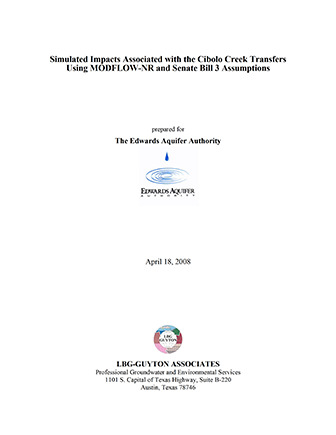|
The Edwards Aquifer Authority has promulgated rules that regulate the approach by which a water producer can acquire additional water rights by purchase or by lease from other water right holders. Water right transfers from Bexar County and west into Comal and Hays Counties are referred to as “Cibolo transfers” because Cibolo Creek is the geographic feature between the two areas. The purpose of this study was to evaluate the impact of ground-water pumpage on aquifer water levels and springflow at Comal and San Marcos springs with the implementation of the Cibolo Transfer Rule. Using available data and the EAA MODFLOW groundwater model (with dry cell controls) to assess the impact of Cibolo transfers, the evaluation was based on five factors: geographic location relative to the springs, aquifer conditions (i.e., wet periods and drought), pumping rates of the transferred permits, critical period rules, and overall impact of the different scenarios on simulated springflow. Most of the Cibolo transfers originate in Bexar County and terminate in Comal County. Modeling results showed that permits transferred farther east have more impact on San Marcos springflow and slightly raise water levels in J-17 because pumping is shifted downgradient of J-17. Transfers may increase or decrease springflow at Comal Springs, but decrease springflow at San Marcos Springs. The decreases are exacerbated by higher summer pumping or during droughts. The study was completed on April 18, 2008 by LBG-Guyton Associates, Austin, Texas.
|

